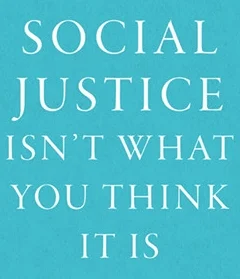Social Justice Isn't What You Think It Is
You can’t go far on the internet without bumping into someone talking about social justice. For some, social justice is a positive term that indicates their desire to see the world become better. For others, social justice is an epithet for those who seek absolute domination of private lives through government and personal tyranny.
The trouble is that both definitions are accurate in some circumstances.
A bigger problem is that people nearly always use the term “social justice” without explaining what they mean by it. As a result, the blogger writing about social justice in terms of eliminating overt racism, the anarchist calling for the end of credit ratings, and the socialist calling for massive hikes in personal income taxes to create a utopian nanny state all use the term, but mean radically different things. Social justice with one definition can be a moral imperative that Christians should support. By another definition is may be a debatable concept on which good people can disagree. And, used in another way, it may be a morally reprehensible concept that actually enforces injustice under an Orwellian label.
The ambiguity of the definition of social justice is only enhanced in Christian conversations because the term originated in Catholic social teachings. Due to ignorance about the fundamental lack of authority of the Roman Catholic magisterium and anachronistic readings of contemporary uses of “social justice,” the idea of social justice is often used as a club by Christians who claim that socialism is a necessary corollary to biblical Christianity or that affirming immorality is a moral duty.
In his most recent book, Michael Novak seeks to define social justice, reveal the confusion in the popular use of the term, and show why Catholic social teaching does not actually require supporting socialist economics and whatever the latest version of identity theory happens to be. This book relies on essays Novak had previously written with some additional framing to make it cogent. The book has a co-author, Paul Adams, and an additional contributor, which reflects the efforts to get some of this helpful teaching into the public square by friends of Novak.
Summary
The aptly titled book, Social Justice Isn’t What You Think It Is, has two distinct parts. Part One was written by Novak and includes seven chapters that define social justice, six chapters on Catholic Social Teaching on social justice, and two chapters that critique the theological difficulties with misapplication of Catholic Social Teaching. Part Two consists of five chapters of practical application by co-author, Paul Adams.
The contributions of this book to the ongoing conversation are significant. Novak’s systematic outline of six common uses of the term “social justice” help reveal and explain the confusion of contemporary public dialog. As a careful thinker, Novak shows why demanding a definition is so very important. Novak also outlines a better and helpful meaning for the term social justice that is consistent with actual Catholic Social Teaching. At the same time, Novak offers a cogent response to socialists that try to claim Catholic Social Teaching as providing authoritative support for their position. There is sometimes resonance, but his exposition reveals that many the claims made by anti-market crusaders are built on misrepresentations of what popes actually wrote.
Paul Adam’s section of this book is helpful, as well, as he shows how social justice, properly defined, can be applied to real situations to bring about real justice. As a professor emeritus of social work, he offers historical case studies and theoretical examples of positive outcomes based on applying a rational concept of social justice to real world problems.
Analysis and Conclusion
This volume offers an important entry in the conversation on social justice. The first chapters are universally applicable and instructive in understanding the contemporary debate. For non-Catholics, the remainder of the Part One is instructive and helpful, but limited since it relies on the assumed authority of the Roman Catholic church. There are, however, valuable principles that can be evaluated against Scripture, many of which are directly applicable beyond the hierarchy of the Roman Catholic denomination. The inclusion of Adams’ applications is helpful, since a common and valid criticism of much of the conservative rebuttal of various versions of social justice is that there is too little evidence of application of conservative principles of social justice.
The most significant benefit of this volume is that it clears the way for legitimate discussions about the nature of social justice. I’m not convinced that attempting to redeem the term that has been so successfully coopted and confused is the best way forward, but Novak and Adams make it at least possible. That is an important contribution that makes this book an important entry into a vital conversation.
NOTE: I received a gratis copy of this volume from the publisher with no expectation of a positive review.











